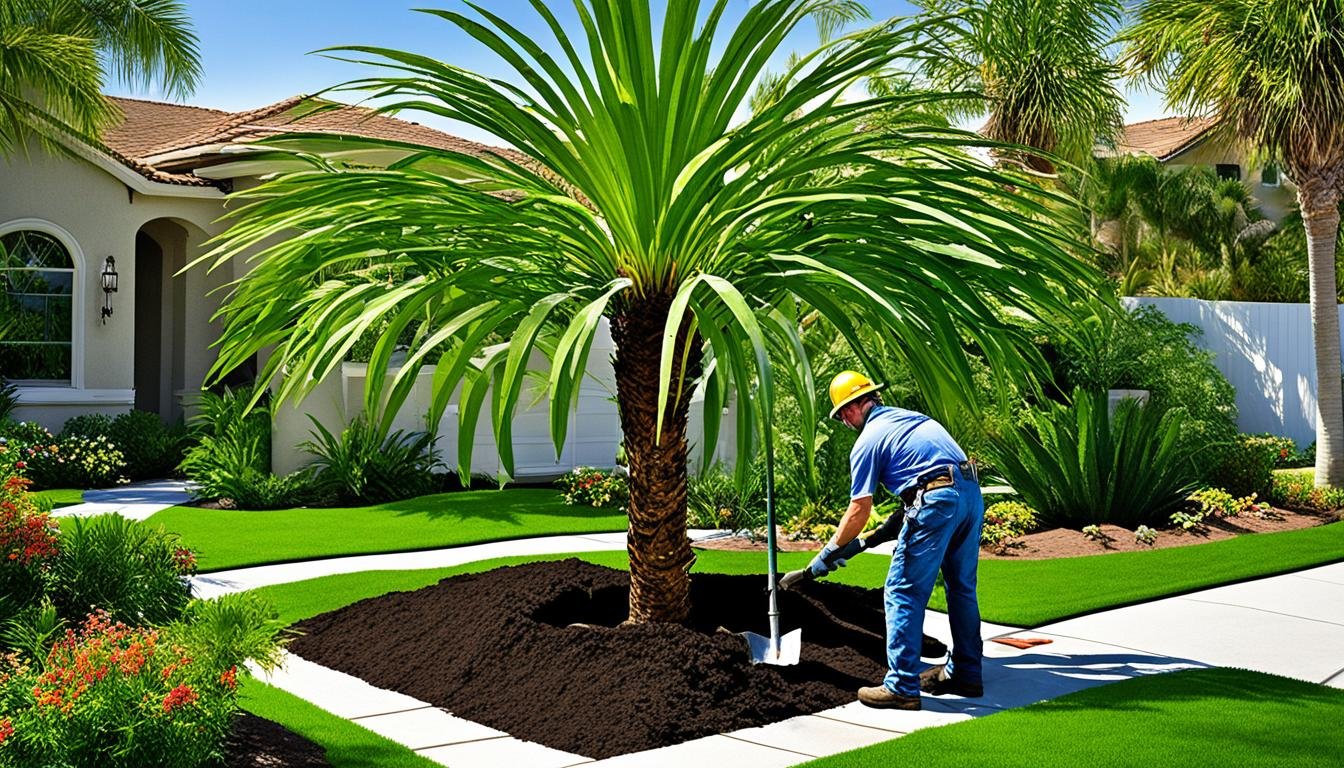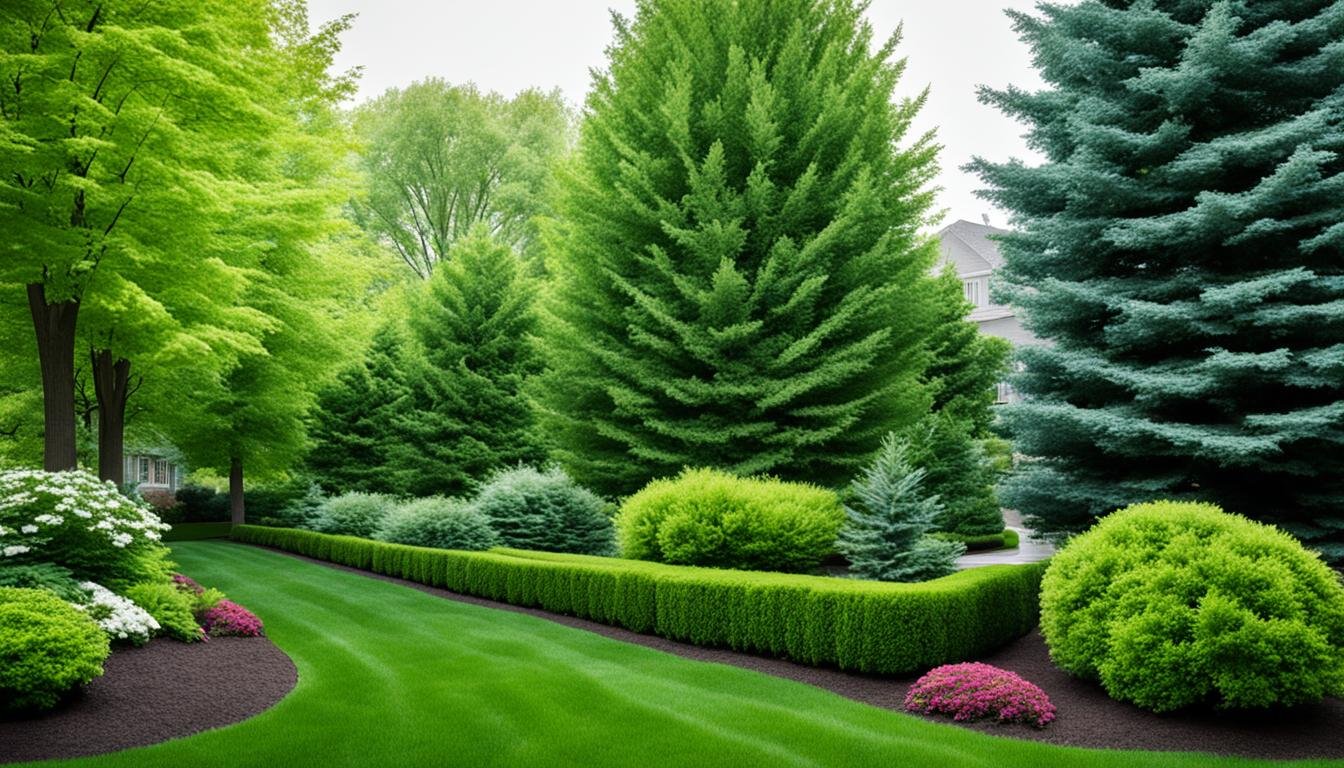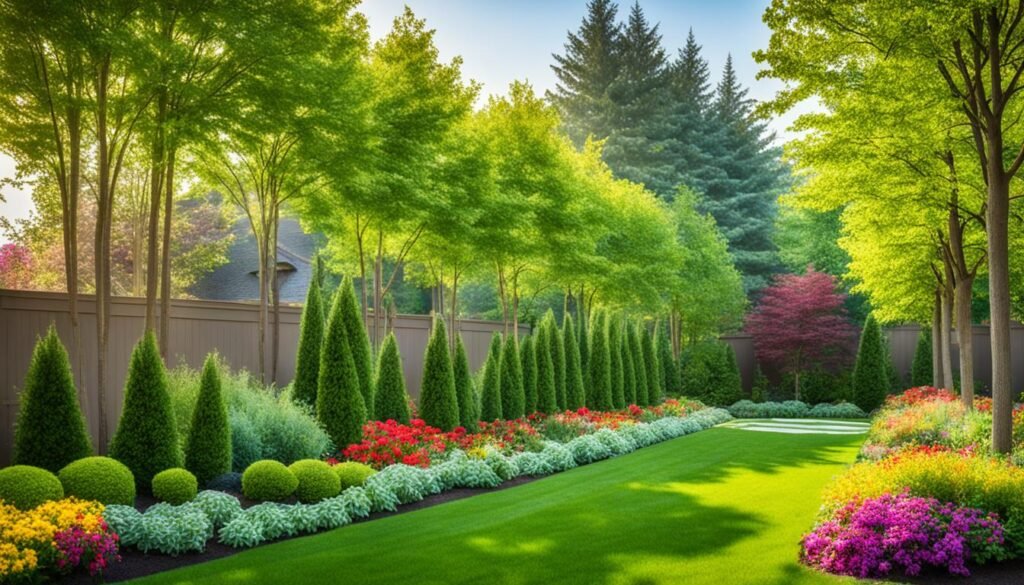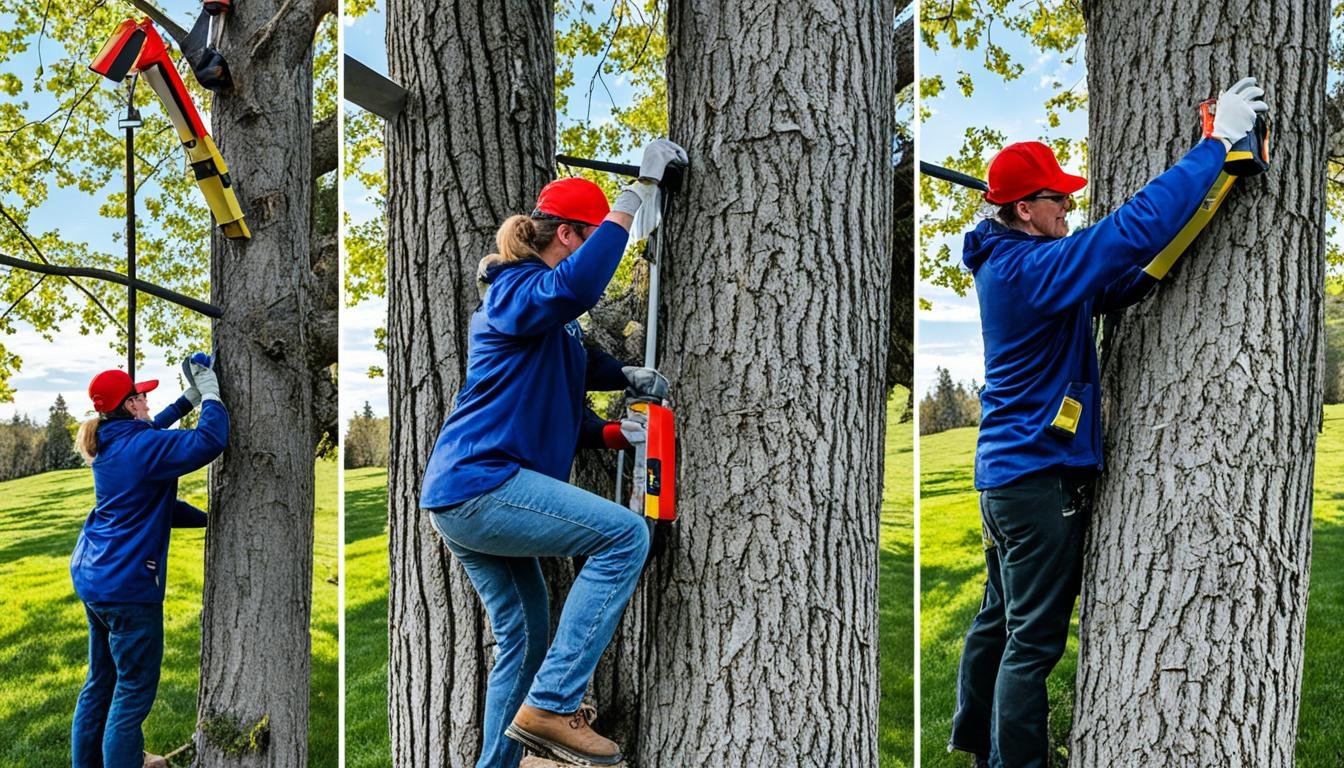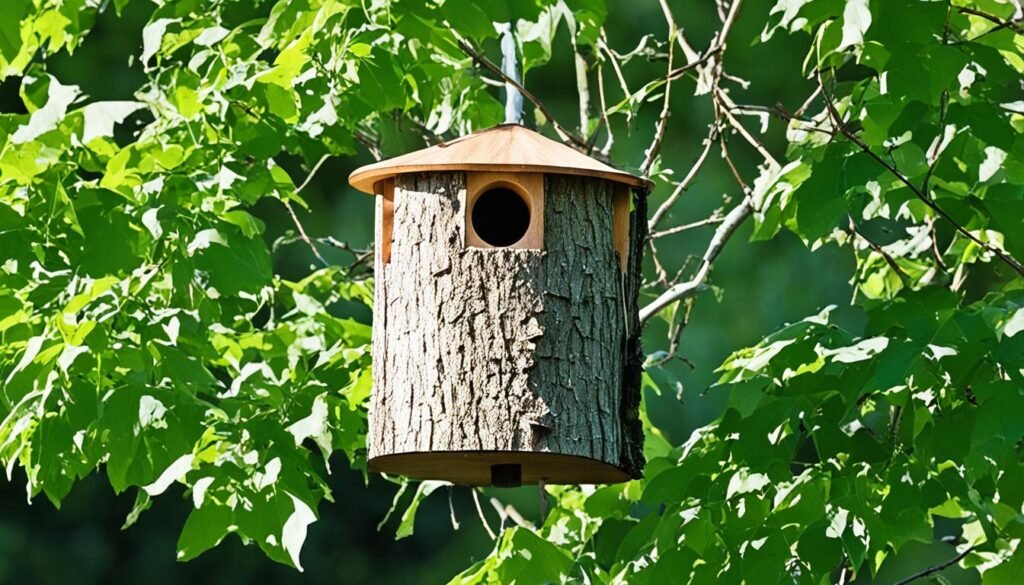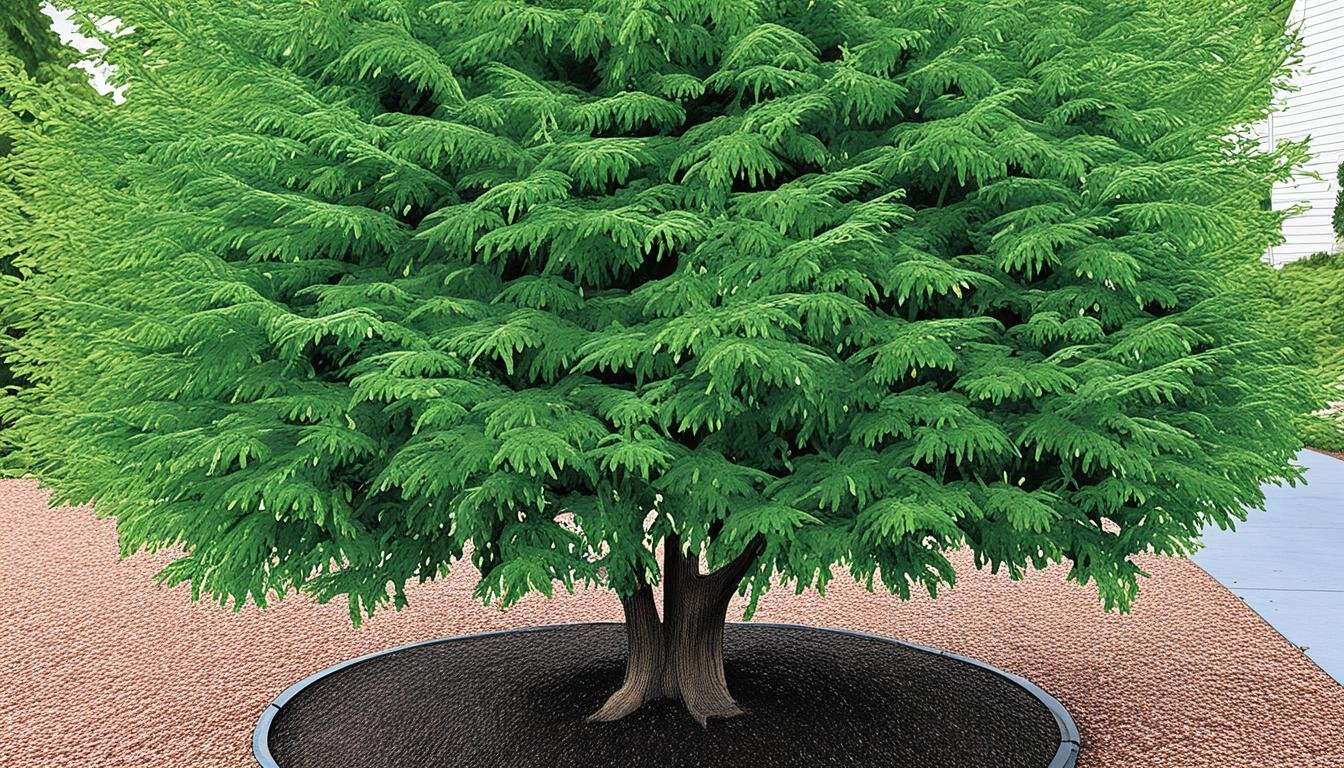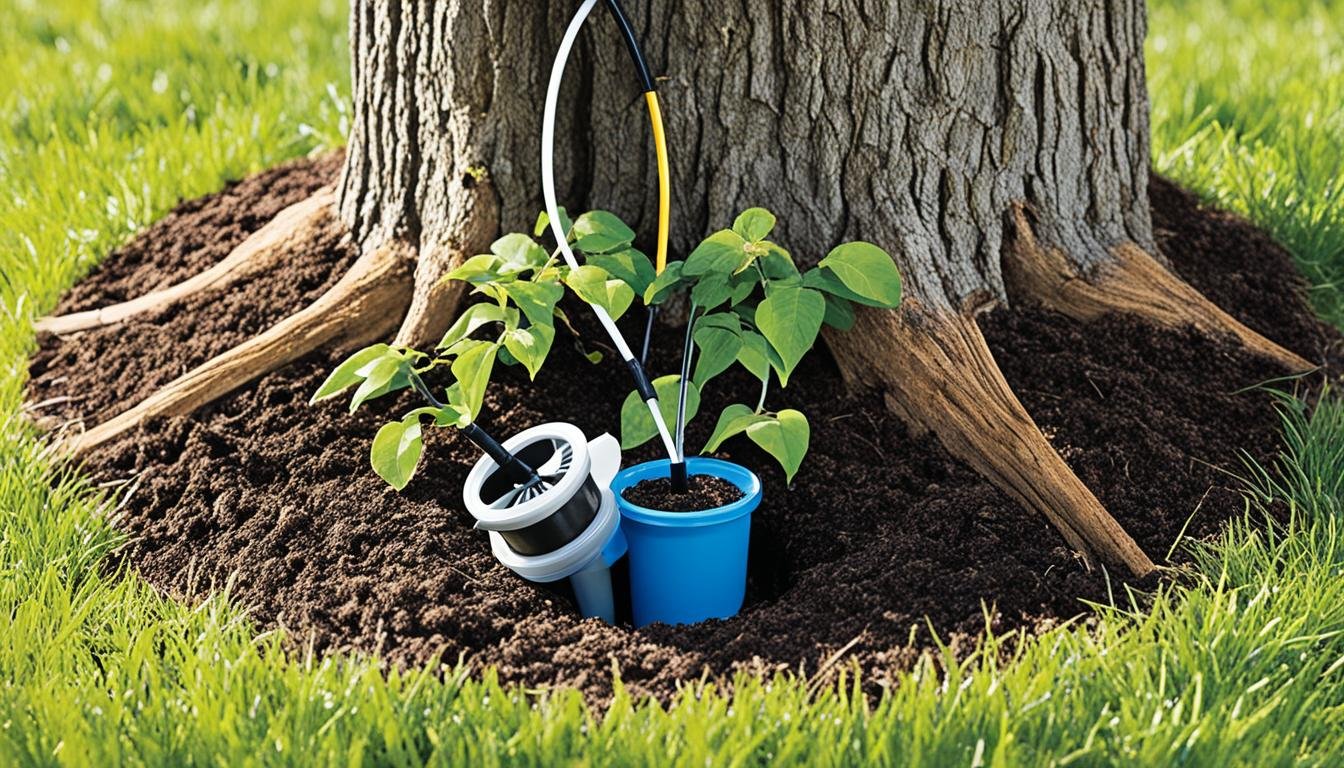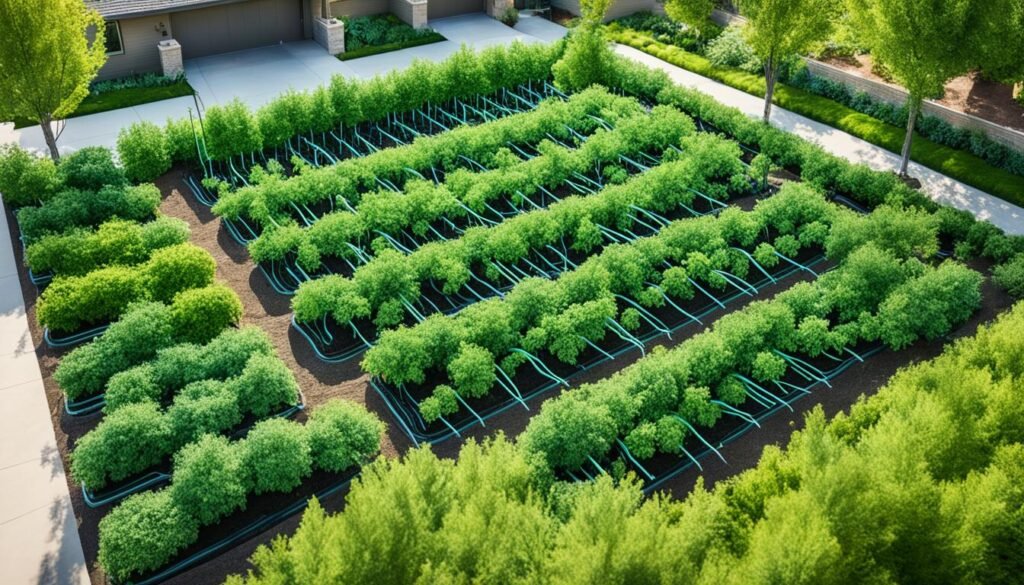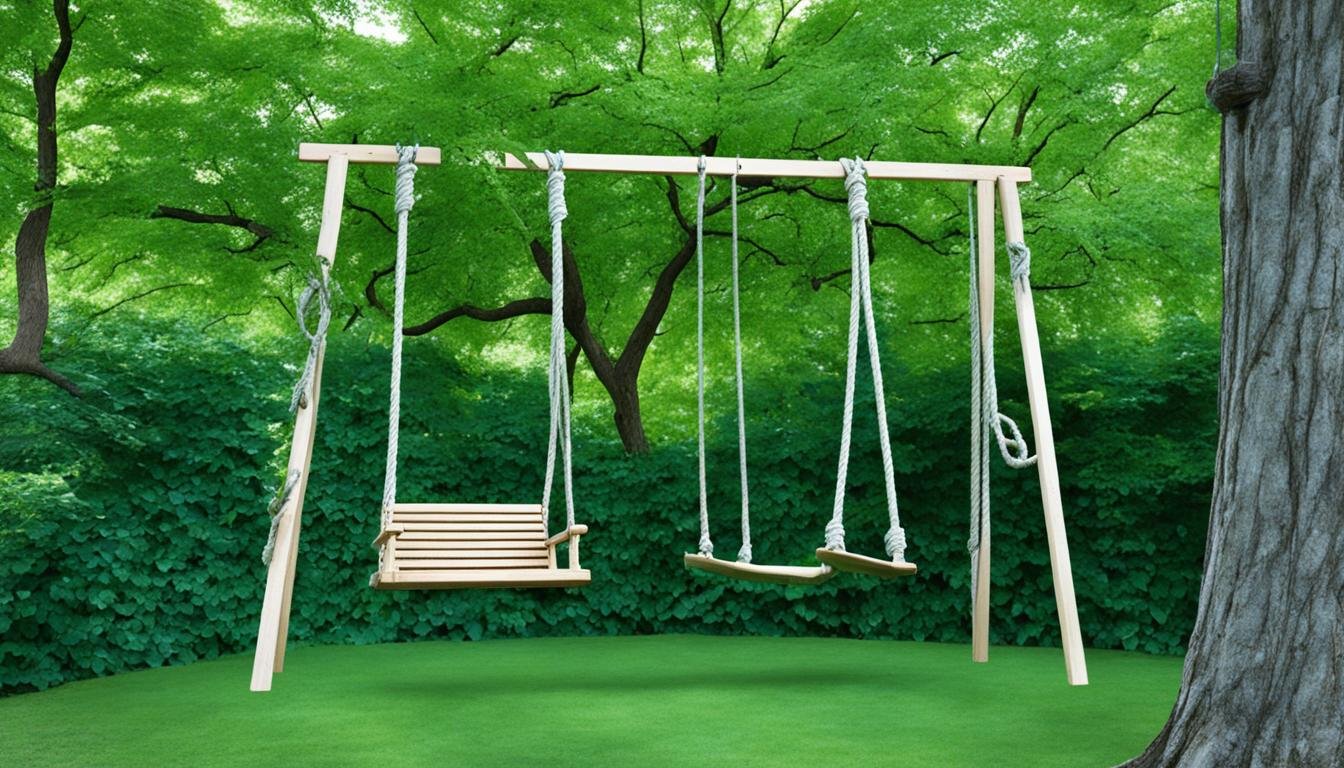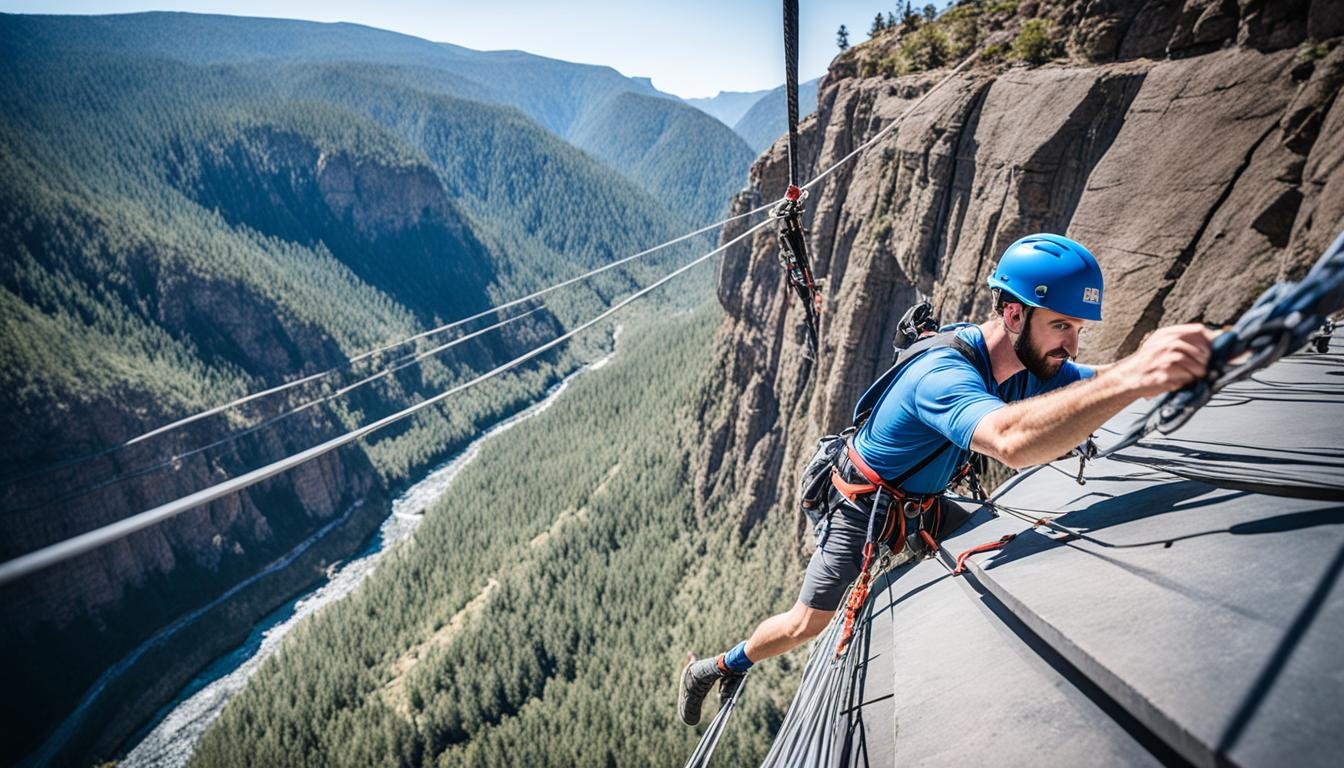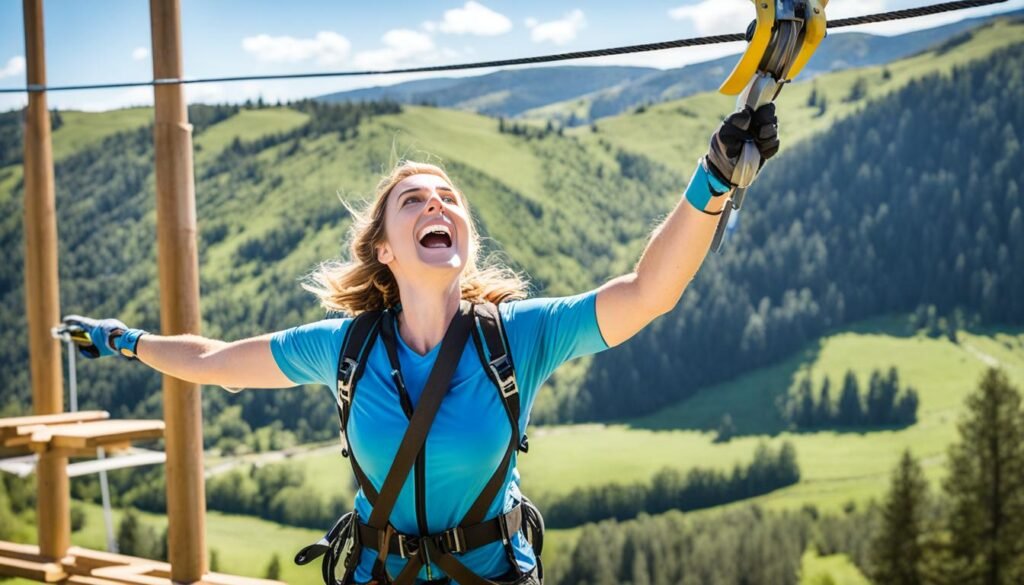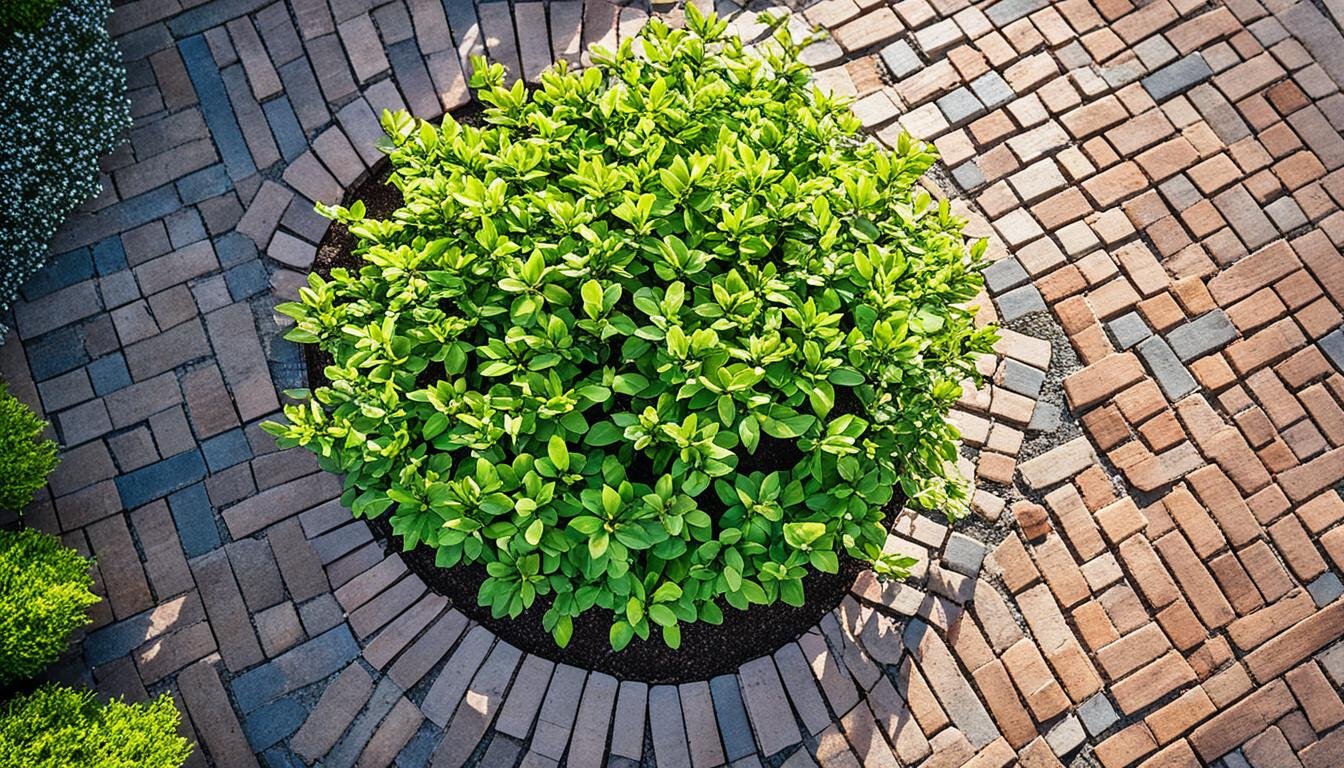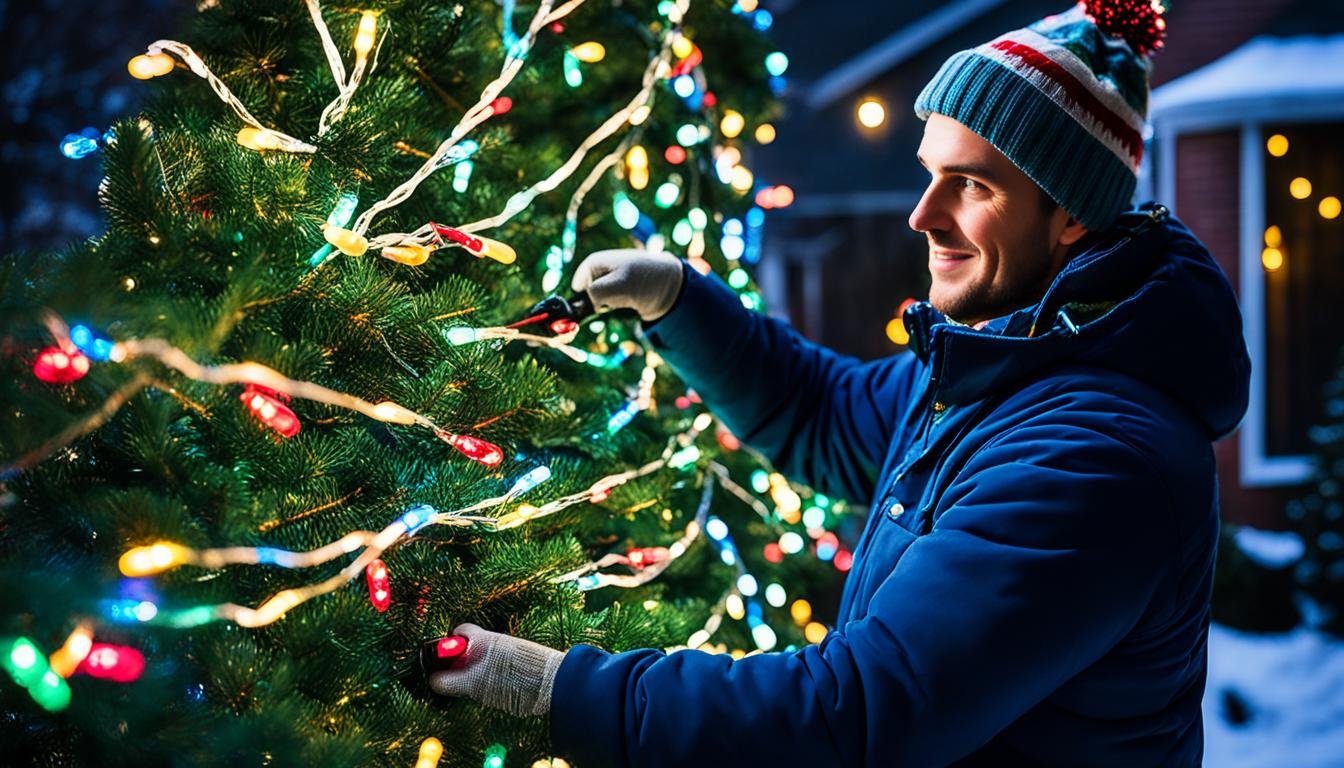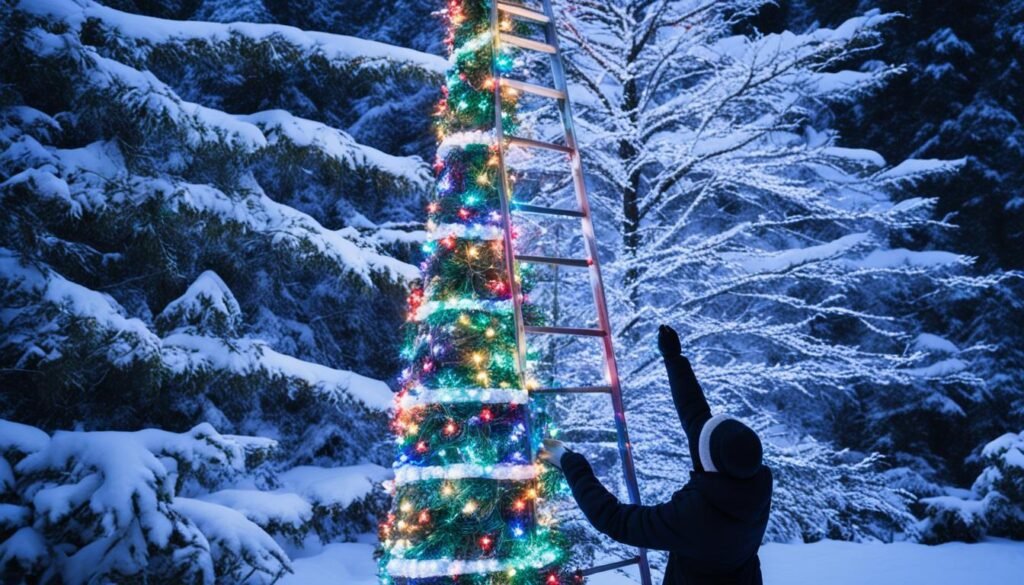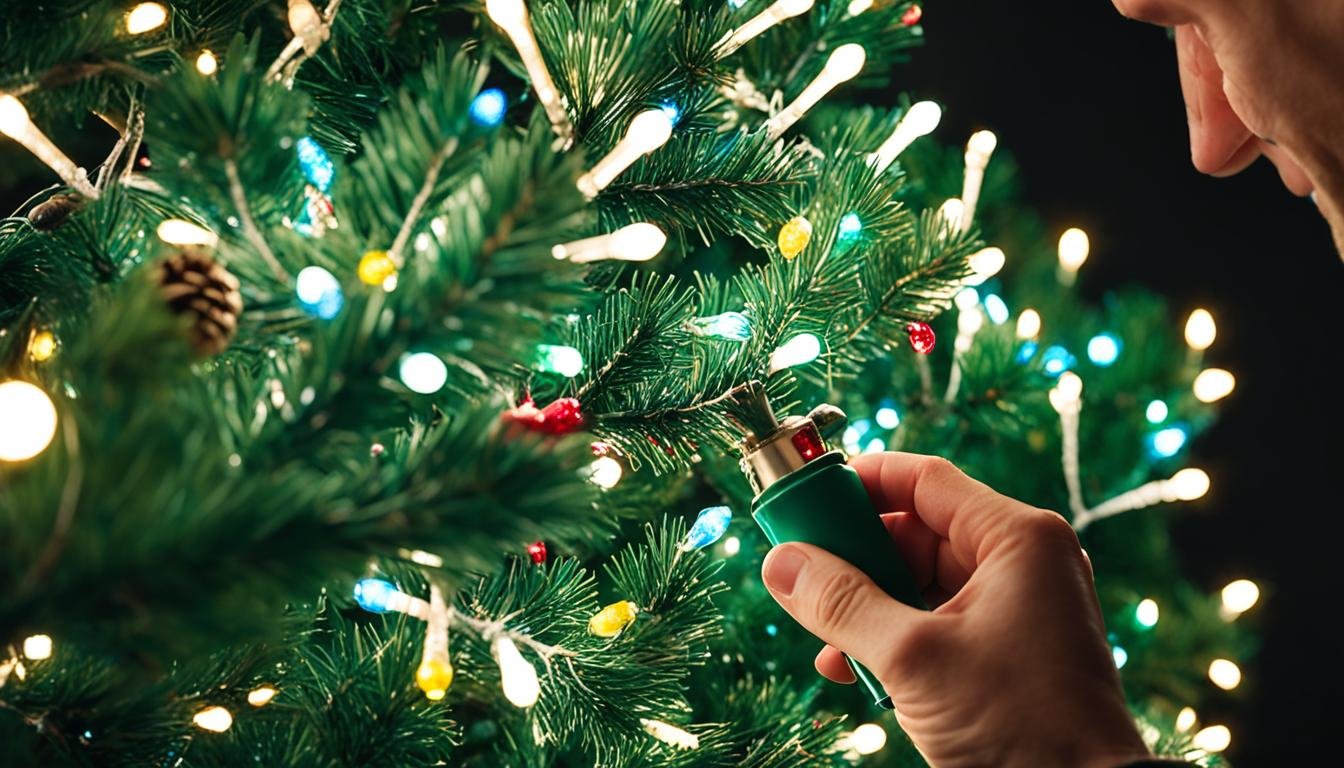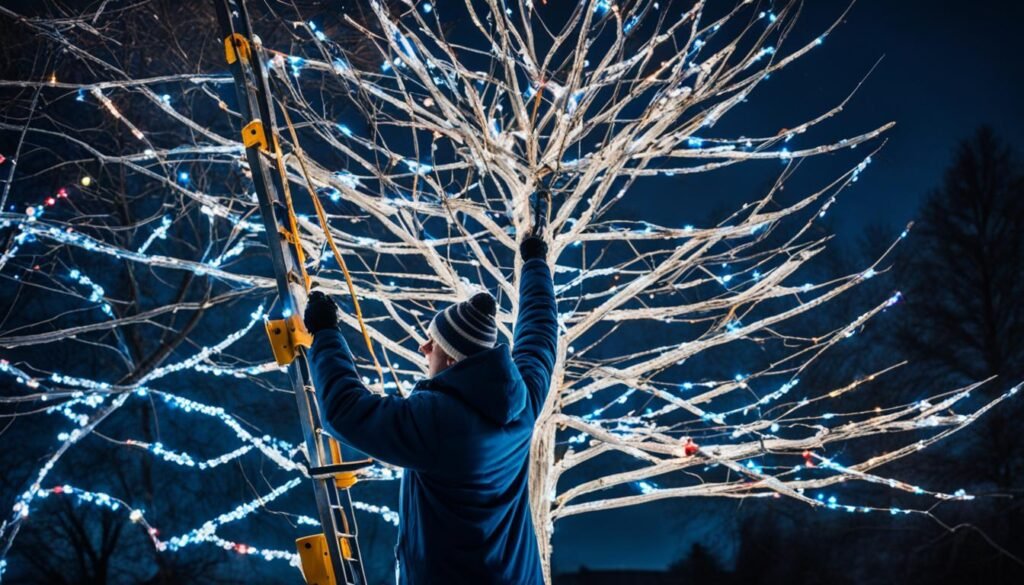Did you know that the average cost of installing a palm tree is $250? However, prices can vary significantly depending on the size and type of tree, ranging from as low as $100 to over $2,000 or more. If you’re considering adding a palm tree to your landscape, it’s essential to understand the factors that affect the cost and discover tips for saving money on installation.
Key Takeaways:
- The average cost to install a palm tree is $250, but prices can range from $100 to over $2,000.
- Factors influencing the cost include the type of palm tree and its size.
- Popular palm tree types such as the Bottle Palm, Chinese Palm, and Coconut Palm have varying price ranges.
- Labor costs for professional tree planting services range from $50 to $150 per hour.
- Visiting multiple nurseries, buying smaller palms, and considering DIY installation are ways to save money on palm tree installation.
Factors Affecting the Cost of Palm Tree Installation
Several factors contribute to the cost of installing a palm tree. Understanding these factors can help you budget for your palm tree landscaping project effectively. Key cost variables include the type and size of the palm tree, as well as labor costs and ongoing expenses.
Type of Palm Trees
The type of palm tree you choose plays a significant role in determining its cost. With over 2,600 varieties available, there is a wide range of options to suit different preferences and budgets. Some popular palm tree types and their average costs include:
| Palm Tree Type | Average Cost |
|---|---|
| Bottle Palm | $50-$100 |
| Chinese Palm | $50-$100 |
| Coconut Palm | $400-$1,000+ |
These prices can vary depending on factors such as tree size and availability. It’s best to consult with local palm tree specialists or nurseries to get accurate cost estimates for specific palm tree types.
Size of Palm Trees
The size of the palm tree also affects the overall cost. Generally, smaller palm trees cost less than larger ones due to factors such as growth time and transportation expenses. Here is a breakdown of the average cost range based on tree size:
- Small Palm Trees (2 to 4 feet): $15-$50
- Medium Palm Trees (4 to 5 feet): $100-$200
- Large Palm Trees (6 feet or more): $150-$2,000+
Remember that these are average prices and can vary depending on factors such as the specific tree species and its maturity.
Labor Costs
When hiring professional tree planting services, labor costs are an important consideration. The cost of labor can vary depending on factors such as the complexity of the installation and the experience of the service provider. On average, professional tree planting services charge between $50 and $150 per hour for labor. It’s advisable to obtain customized quotes from palm tree specialists to determine the exact labor costs for your specific project.
Ongoing Expenses
After the palm tree installation, there are ongoing expenses to consider. These expenses include watering, fertilizing, and maintenance, all of which contribute to the long-term health and beauty of the palm tree. The cost of ongoing expenses can vary depending on factors such as the local climate, the size of the tree, and the specific maintenance requirements for the chosen palm tree species.
Overall, understanding the factors affecting the cost of palm tree installation can help you make informed decisions and plan your landscaping budget accordingly.
Tips for Saving Money on Palm Tree Installation
When it comes to installing palm trees, there are several smart strategies you can employ to save money. Here are some cost-saving tips:
1. Visit Multiple Nurseries: Take the time to visit multiple nurseries or garden centers to compare prices for the same species or variety of palm trees. This allows you to find the best deal that fits your budget without compromising on quality.
2. Explore Community Plant Exchanges: Keep an eye out for community plant exchanges or sales, where individuals often offer palm trees at lower prices or even for free. This is a fantastic way to save money and support your local gardening community at the same time.
3. Consider Buying Smaller Palms: Opting for smaller or younger palm trees and allowing them to grow over time can significantly reduce costs compared to purchasing fully grown ones. Not only will you save money upfront, but you’ll also have the satisfaction of watching your palms flourish and mature.
4. DIY Palm Tree Installation: If you have the necessary skills and tools, consider tackling the installation yourself. By taking on this project, you can eliminate the labor costs associated with professional tree planting services, giving you more control over your budget.
5. Take Advantage of Bulk Discounts: If you’re planning to add multiple palm trees to your landscape, consider purchasing them from the same supplier. Many suppliers offer bulk discounts, allowing you to save money on each tree as well as potentially reducing delivery costs.
Implementing these tips will help you save money while still creating a stunning palm tree oasis in your landscape. By being resourceful and strategic in your approach, you can enjoy the beauty of palm trees without breaking the bank.
FAQ
What factors affect the cost of palm tree installation?
The cost of installing a palm tree can vary based on factors such as the type of palm tree, the size of the tree, labor costs, and ongoing expenses for maintenance.
How much does it cost to install a palm tree?
The average cost of installing a palm tree is 0, but prices can range from 0 to ,000 or more depending on the size and type of tree.
What are some popular types of palm trees and their average costs?
Popular palm tree types include the Bottle Palm (-0), Chinese Palm (-0), and Coconut Palm (0-
FAQ
What factors affect the cost of palm tree installation?
The cost of installing a palm tree can vary based on factors such as the type of palm tree, the size of the tree, labor costs, and ongoing expenses for maintenance.
How much does it cost to install a palm tree?
The average cost of installing a palm tree is $250, but prices can range from $100 to $2,000 or more depending on the size and type of tree.
What are some popular types of palm trees and their average costs?
Popular palm tree types include the Bottle Palm ($50-$100), Chinese Palm ($50-$100), and Coconut Palm ($400-$1,000+), with costs varying based on their size and availability.
How does the size of the palm tree affect the installation cost?
Small palm trees (2 to 4 feet) can range from $15 to $50, medium palm trees (4 to 5 feet) from $100 to $200, and large palm trees (6 feet or more) from $150 to $2,000+.
How much do labor costs contribute to the overall installation cost?
Professional tree planting services typically charge between $50 and $150 per hour for labor.
What are some ways to save money on palm tree installation?
Homeowners can save money by visiting multiple nurseries for price comparisons, exploring community plant exchanges or sales, buying smaller or younger palms, or considering DIY palm tree installation if they have the necessary skills and tools.
,000+), with costs varying based on their size and availability.
How does the size of the palm tree affect the installation cost?
Small palm trees (2 to 4 feet) can range from to , medium palm trees (4 to 5 feet) from 0 to 0, and large palm trees (6 feet or more) from 0 to ,000+.
How much do labor costs contribute to the overall installation cost?
Professional tree planting services typically charge between and 0 per hour for labor.
What are some ways to save money on palm tree installation?
Homeowners can save money by visiting multiple nurseries for price comparisons, exploring community plant exchanges or sales, buying smaller or younger palms, or considering DIY palm tree installation if they have the necessary skills and tools.

